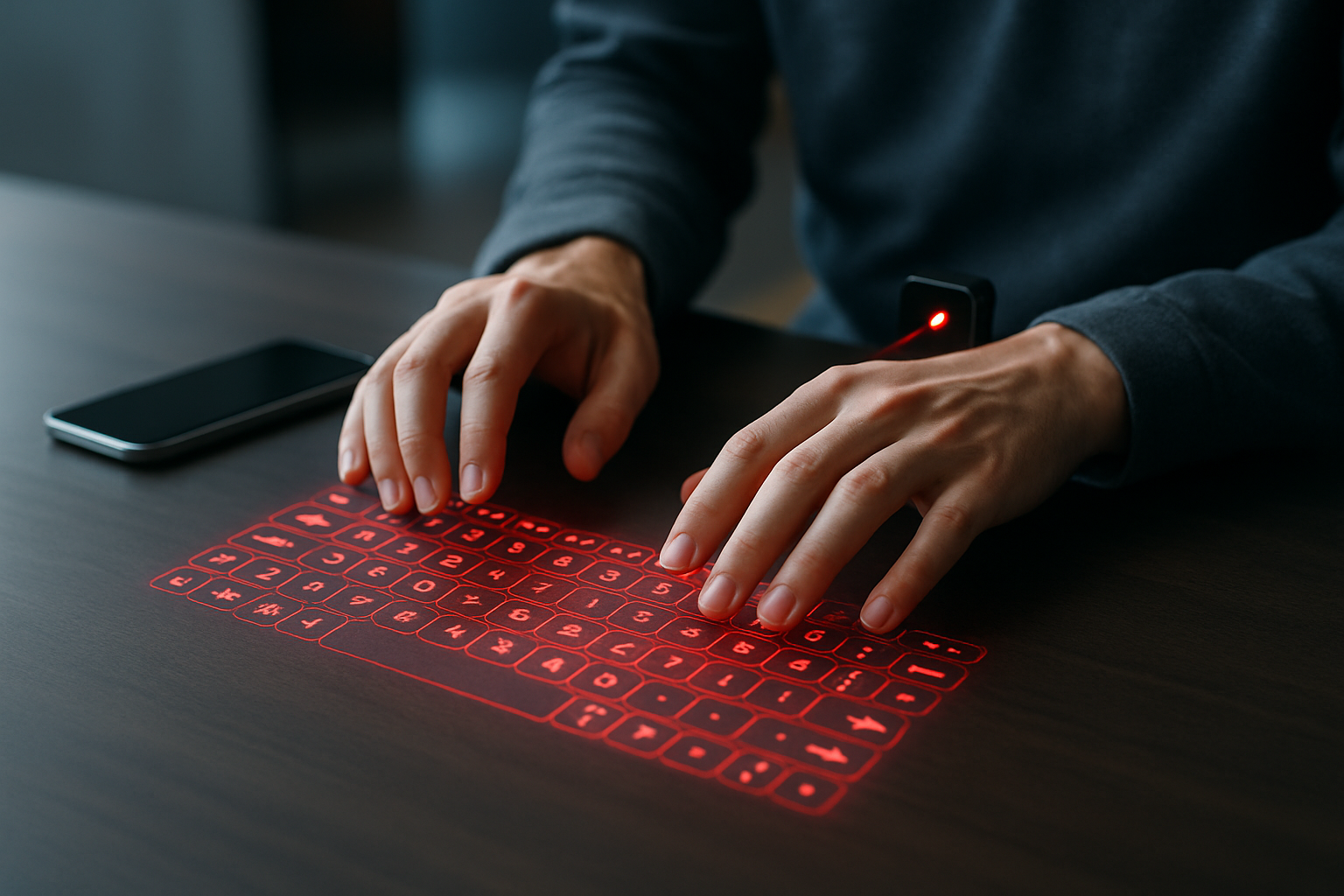Holographic Keyboards: A Glimpse into the Future of Typing
The world of technology never ceases to amaze, and holographic keyboards are no exception. These futuristic input devices promise to revolutionize the way we interact with our devices, offering a blend of sci-fi fantasy and cutting-edge innovation. As we delve into this emerging technology, we'll explore its potential to reshape our digital interactions and the challenges it faces in becoming a mainstream reality.

Holographic keyboards represent a paradigm shift in how we think about typing. By projecting a virtual keyboard onto any flat surface, they eliminate the need for physical hardware, opening up new possibilities for portability and design flexibility. This technology has been in development for years, with early prototypes appearing as far back as the early 2000s.
How Holographic Keyboards Work
At their core, holographic keyboards rely on a combination of projection technology and motion sensing. A small projector beams the image of a keyboard onto a surface, while infrared sensors detect the movement of your fingers. When you “press” a key, the system interprets this as input and sends the corresponding signal to your device.
The technology behind these keyboards is more complex than it might seem at first glance. Advanced algorithms are required to accurately track finger movements and distinguish between intentional keystrokes and accidental motions. This involves a delicate balance of hardware and software working in tandem to create a seamless user experience.
Current State of the Technology
While holographic keyboards might sound like something out of a science fiction movie, they are very much a reality – albeit one that’s still in its infancy. Several companies have developed working prototypes, with some even making it to market as niche products.
These early offerings have met with mixed reviews. While the novelty factor is undeniable, many users report issues with accuracy and response times compared to traditional keyboards. The lack of tactile feedback – that satisfying click you feel when pressing a physical key – is also cited as a drawback by some.
Despite these challenges, the technology continues to improve. Recent advancements in projection quality and motion sensing accuracy have led to more reliable and responsive holographic keyboards. Some models now even incorporate haptic feedback systems, using ultrasonic waves to simulate the sensation of pressing keys.
Potential Applications and Market Impact
The potential applications for holographic keyboards extend far beyond just replacing your laptop’s built-in keyboard. Their compact size and lack of physical components make them ideal for use in space-constrained environments or situations where hygiene is a concern, such as hospitals or public kiosks.
In the mobile world, holographic keyboards could revolutionize smartphone and tablet accessories. Imagine being able to type on a full-sized keyboard projected onto any surface, then simply slip your phone back into your pocket when you’re done. This level of portability and convenience could be a game-changer for mobile productivity.
The market for holographic keyboards is still relatively small, with most products falling into the high-end or novelty categories. Prices for consumer-grade models currently range from $100 to $300, putting them out of reach for many casual users. However, as the technology matures and production scales up, we can expect prices to drop, potentially opening up a much larger market.
Challenges and Future Developments
Despite their potential, holographic keyboards face several hurdles on their path to widespread adoption. The lack of tactile feedback remains a significant issue for many users, particularly touch typists who rely on the feel of keys to maintain speed and accuracy. While haptic feedback systems show promise, they have yet to fully replicate the sensation of typing on a physical keyboard.
Power consumption is another concern, especially for mobile applications. The constant use of projection and sensing technologies can quickly drain battery life, limiting the practicality of holographic keyboards for extended use on the go.
Looking to the future, researchers are exploring ways to address these challenges. Advancements in low-power projection technology and more efficient motion sensing could help extend battery life. Some companies are even experimenting with combining holographic keyboards with augmented reality displays, creating fully virtual workspaces that can be accessed anywhere.
As we stand on the brink of this technological leap, it’s clear that holographic keyboards have the potential to reshape our relationship with our devices. While they may not replace traditional keyboards overnight, they represent an exciting step towards a more flexible and immersive digital future. As the technology continues to evolve, we can expect to see holographic keyboards playing an increasingly prominent role in our daily lives, blurring the lines between the physical and digital worlds in ways we’re only beginning to imagine.





